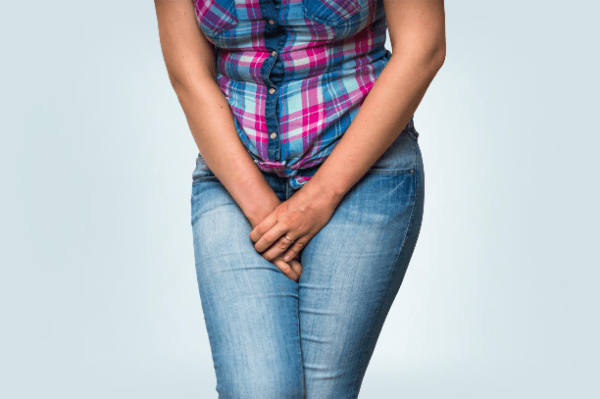
What is urinary incontinence?
Urinary incontinence is the involuntary loss or leakage of urine. The word ‘involuntary’ suggests that it happens when you do not intend to pass urine, either because you have just been to the loo or it is socially inconvenient.
What causes urinary incontinence?
There are two main types of urinary incontinence: urgency incontinence and stress incontinence. The cause depends on what type of incontinence the patient has.
Urgency incontinence
As the name suggests, in this condition the loss of urine is preceded by urgency, which is a sudden compelling desire to urinate that cannot be postponed. This type of incontinence is due to an overactive or irritable bladder that is unable to stay relaxed for any length of time and goes into intermittent spasms, causing urgency with or without incontinence. In a great majority of cases, it is just a random misbehaviour on the part of the bladder, although sometimes there can be a cause such as infection, stone, something neurological (multiple sclerosis [MS] for example) or occasionally, even bladder cancer. This type of incontinence is seen much more often in women than in men.
Stress incontinence
This type of incontinence is seen almost exclusively in women and the usual cause is a weak pelvic floor as a result of childbirth. As the name suggests, it happens whenever the patient’s abdomen (tummy) is subjected to any physical stress such as from coughing, sneezing, bending, heavy lifting, jogging, trampolining etc. Uncommonly, when it is seen in men, it is almost always after prostate surgery.
Mixed incontinence means the patient has both types of symptoms as explained above. Another, uncommon type of incontinence is overflow incontinence – this is usually seen in association with a very full bladder as a result of prostatic obstruction in men.
How is urinary incontinence diagnosed?
Most cases can be diagnosed well enough to start the initial treatment on the basis of a good history, physical examination and urine test, with or without a basic bladder scan. In hospitals, especially before starting any surgical treatment, we can also use more specialised tests and tools such as a bladder diary, urine flow test and urodynamics, if required.
How is urinary incontinence treated and what can patients do or access at this time of restricted hospital services?
Restrictions on hospital services have only affected the specialised investigations and surgical management of patients with urinary incontinence, which is not required for majority of women even in normal times and not until more conservative non-surgical treatments have been tried and found to be ineffective. Therefore, I will describe the steps that can and should be taken to benefit a number of women regardless of restrictions on hospital visits.
- Virtual consultation – It is important to arrange a virtual consultation with your GP or a specialist, so that the all-important question about the type of incontinence can be answered. Moreover, it will help in excluding other conditions that may have presented with urinary incontinence but warrant a different, possibly more urgent course of action. Examples of such conditions are urinary infection (causing frequency of urination, burning, foul-smelling urine with or without fever and blood in urine), bladder outflow obstruction (causing a weak urinary flow and a sense of incomplete emptying) and bladder cancer (short history of urgency and urinary incontinence with blood in urine with or without bladder pain).
A virtual consultation will also help in establishing how bothersome your problem is and that, should a medicine be required, there are no issues about safety, interaction etc. - Fluid intake optimisation – When we have a ‘weak bladder’, we intuitively restrict our fluid intake in the belief that the more we drink, the more we will need to pee. This may be true, but only to a certain extent. If we restricted our fluid intake too much, our urine will be concentrated and will irritate the bladder even more causing an aggravation of symptoms of an overactive bladder (frequency, urgency and urgency incontinence). Therefore, it is important to drink a reasonable amount of fluid. It is difficult to make a blanket recommendation on how much to drink, as every individual body is different. The best guide is the colour of urine. If it is orange or yellow, you need to drink more. If you drank 1.5 to 2.0 L per day, you will not be too off the mark. It is also important to be careful about the type of fluids you drink.
In general, caffeinated (tea, coffee, hot chocolate) and carbonated (fizzy beverages like coke) drinks can irritate the bladder and should be avoided. - Bladder re-training – This means delaying urination by using some distraction technique (e.g. counting backwards from 100) when you get the urge to go. Clenching or contracting the pelvic floor (see later) can often supress the urge to urinate. You may start by trying to hold off for 5 to 10 minutes to begin with and then work your way up gradually by adding aliquots of 10 minutes to the holding time once every few days until you can comfortably hold for 2 to 3 hours. This technique is likely to help those with symptoms of an overactive bladder.
- Vaginal oestrogen cream or pessary – This can help post-menopausal women with an overactive bladder. It should be avoided if there is a history of breast cancer or DVT.
- Medications – There are a number of medications available for overactive bladder e.g. anti-cholinergics (oxybutynin, tolterodine, solifenacin, darifenacin, fesoterodine, trospium chloride) or mirabegron. They should be avoided if there are symptoms of bladder outflow obstruction (weak flow and sense of incomplete emptying) or narrow angle glaucoma (mirabegron is allowed in this case) and any drug, once started, should be persevered with for at least 4 weeks unless there are bothersome side effects.
- Timed voiding – This means passing urine every 2 to 4 hours by the clock instead of waiting for the urge to urinate. This technique should help women with stress incontinence by ensuring that there is not much urine in the bladder at any given time.
- Weight reduction – Weight optimisation improves continence particularly in cases of stress incontinence.
- Pelvic floor exercises – These exercises strengthen the pelvic floor muscles and therefore, are effective for stress incontinence. To identify the pelvic floor muscles, imagine you are trying to stop your urine flow or stop a bout of diarrhoea. It is those muscles that you are aiming to strengthen. Tighten the muscles and hold for 10 seconds (i.e. count up to 10), then relax for 10 seconds. If you find it difficult to hold contractions for 10 seconds, start with tightening and relaxing for 5 seconds and then work your way up. Repeat this contraction and relaxation ten times. Perform this set of 10 contractions and relaxations at least 3 times a day. And remember, pelvic floor exercises, if effective, are a life-long habit.
- Urethral devices for insertion – These are tampon-like devices that can be inserted into the urethra to mechanically stop urine from leaking. These need to be removed for urination and then re-inserted. Obviously, these are only to be used by women. These can be purchased over the counter, but most women will struggle to use it for the first time without being instructed by a specialist nurse. These should theoretically work for both urgency and stress incontinence, but in case of an overactive bladder, the spasm can be so strong as to expel the device.
- Incontinence pads – The measures suggested above will take up to several weeks, if not months to improve continence, and even then, the improvement may be less than perfect. For such cases, incontinence pads may be a good way of containing urine leak and preventing embarrassment and inconvenience. There are many brands and different sizes available over the counter. Choose the right size (based on your own physique and the amount of leakage) pads made of cotton, which absorb the leak better and cause less irritation. Change them frequently, as wet pads can cause skin damage and promote urine infections.
In summary…
Despite the restrictions imposed by COVID-19, the majority of women with urinary incontinence can be diagnosed on the basis of symptoms reported in a virtual consultation and managed reasonably effectively with a combination of non-surgical forms of treatment prescribed remotely.
This article is for information only and should not be used for the diagnosis or treatment of medical conditions. myHealthSpecialist makes no representations as to the accuracy or completeness of any of the information in this article or found by following any link from this article. Please consult a doctor or other healthcare professional for medical advice.

Mr Vibhash Mishra, Urological Surgeon
Book a telephone or video consultation with Mr Vibhash Mishra